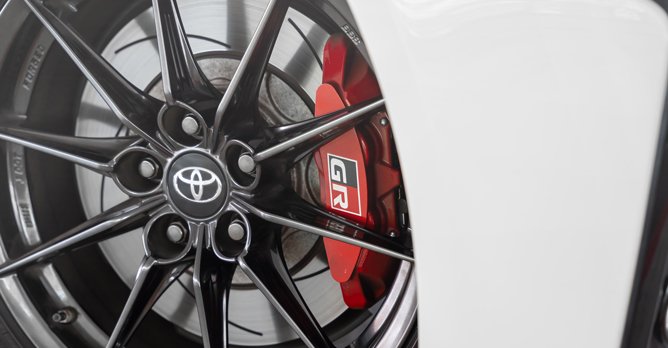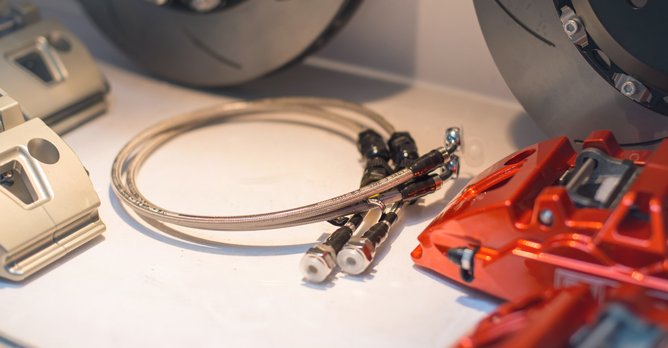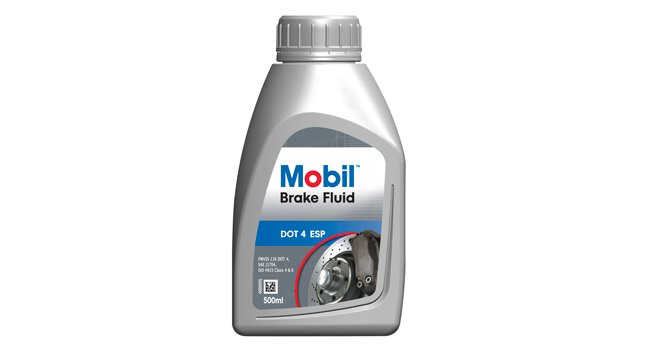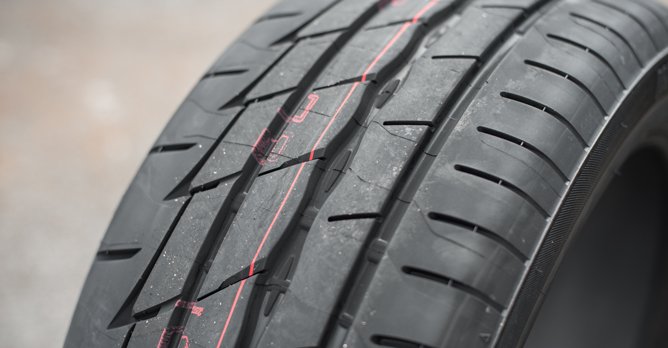Stopping power: How to improve braking performance
28 Jun 2022|11,313 views
Petrolheads all want to make their cars go faster, but a true enthusiast's approach to modification is a holistic one. Therefore, apart from increasing the power and improving handling matters, the braking performance has to be enhanced as well.
Here's what you need to help ensure that your car stops as well as it goes.
Big brake kit (BBK)

The wider surface area of the larger discs will improve heat dissipation, which means longer and more hard stops before brake fade sets in.
For drivers who enjoy track days, a BBK is almost a compulsory pre-requisite.
Brake rotors are also available in slotted or cross-drilled forms. The latter has even better cooling properties, but over time, may warp or crack due to repeated thermal expansion and contraction.
High-performance brake pads
A big brake kit will work even better when fitted with high-performance or high-friction brake pads.
If you recall how brakes work, when the brake pedal is depressed, brake fluid forces the callipers, where the brake pads are, to squeeze against the rotors.
The friction created by the pads rubbing against the discs slows down and stops the car. Therefore, high-performance or high-friction pads can further improve this.
Of course, using aggressive pads has its downsides. They tend to shed a lot more brake dust than OEM units, and if you use racing pads for regular driving, they can take a long time to warm up. Until they do, your braking power will ironically be lower!
In addition, depending on the brand, some pads not only wear out sooner - they can even wear out your rotors, too.
Braided brake lines
A big brake kit with high-performance pads is best complemented by braided brake lines/hoses.
Compared to regular rubber lines, braided lines are wrapped by a steel braid. This prevents the lines from expanding under heavy braking, which also gives you a stiffer and more consistent pedal feel.
When non-braided lines expand under use, the brake pedal travel becomes longer and longer. This is because the fluid and pressure in the lines is not being directed towards the callipers.
That said, though braided lines are stronger, they won't last forever. They are still subject to wear and tear, and should be inspected and replaced as necessary.
High-temperature brake fluid
Now that you've got large rotors, high-performance pads and braided lines, you'll also need high-temperature brake fluid.
High-temperature fluid, as it is aptly named, has a higher boiling point compared to regular fluid. This is important because as brake fluid heats up and eventually boils, bubbles will form in the system.
When this happens, there is a risk that the brakes won't function, as it is the fluid, not bubbles/vapour that must be compressed for the brakes to work.
A good move would be to switch from Dot 3 to Dot 4 brake fluid, so you enjoy the benefits of a higher boiling point. Your mechanic should ensure that the system is properly bled to avoid mixing the two types.
Grippier tyres
Slotted rotors the size of dinner plates, steel-braided lines, high-friction pads and Dot 4 fluid are all great, but to cap these all off properly, you'll need a set of high-performance tyres.
The uprated components are undoubtedly excellent, but the only way for their braking performance to reach the road is through the tyres. High-performance rubber has a grippier compound compared to touring or eco-friendly tyres.
Their ability to exert/transfer grip is also enhanced by the stiffer sidewalls.
Tyres are key to the new setup. As the only parts of the car constantly in contact with the road, everything from power transfer, handling and braking goes through them.
Thinking of upgrading your brakes? Here are some stories that may interest you
Brake upgrades available in Singapore
The six most common myths when it comes to brakes
These bad habits are ruining your brakes
Best performance car tyres of 2021
Six performance mods to make your car faster on track
Petrolheads all want to make their cars go faster, but a true enthusiast's approach to modification is a holistic one. Therefore, apart from increasing the power and improving handling matters, the braking performance has to be enhanced as well.
Here's what you need to help ensure that your car stops as well as it goes.
Big brake kit (BBK)

The wider surface area of the larger discs will improve heat dissipation, which means longer and more hard stops before brake fade sets in.
For drivers who enjoy track days, a BBK is almost a compulsory pre-requisite.
Brake rotors are also available in slotted or cross-drilled forms. The latter has even better cooling properties, but over time, may warp or crack due to repeated thermal expansion and contraction.
High-performance brake pads
A big brake kit will work even better when fitted with high-performance or high-friction brake pads.
If you recall how brakes work, when the brake pedal is depressed, brake fluid forces the callipers, where the brake pads are, to squeeze against the rotors.
The friction created by the pads rubbing against the discs slows down and stops the car. Therefore, high-performance or high-friction pads can further improve this.
Of course, using aggressive pads has its downsides. They tend to shed a lot more brake dust than OEM units, and if you use racing pads for regular driving, they can take a long time to warm up. Until they do, your braking power will ironically be lower!
In addition, depending on the brand, some pads not only wear out sooner - they can even wear out your rotors, too.
Braided brake lines
A big brake kit with high-performance pads is best complemented by braided brake lines/hoses.
Compared to regular rubber lines, braided lines are wrapped by a steel braid. This prevents the lines from expanding under heavy braking, which also gives you a stiffer and more consistent pedal feel.
When non-braided lines expand under use, the brake pedal travel becomes longer and longer. This is because the fluid and pressure in the lines is not being directed towards the callipers.
That said, though braided lines are stronger, they won't last forever. They are still subject to wear and tear, and should be inspected and replaced as necessary.
High-temperature brake fluid
Now that you've got large rotors, high-performance pads and braided lines, you'll also need high-temperature brake fluid.
High-temperature fluid, as it is aptly named, has a higher boiling point compared to regular fluid. This is important because as brake fluid heats up and eventually boils, bubbles will form in the system.
When this happens, there is a risk that the brakes won't function, as it is the fluid, not bubbles/vapour that must be compressed for the brakes to work.
A good move would be to switch from Dot 3 to Dot 4 brake fluid, so you enjoy the benefits of a higher boiling point. Your mechanic should ensure that the system is properly bled to avoid mixing the two types.
Grippier tyres
Slotted rotors the size of dinner plates, steel-braided lines, high-friction pads and Dot 4 fluid are all great, but to cap these all off properly, you'll need a set of high-performance tyres.
The uprated components are undoubtedly excellent, but the only way for their braking performance to reach the road is through the tyres. High-performance rubber has a grippier compound compared to touring or eco-friendly tyres.
Their ability to exert/transfer grip is also enhanced by the stiffer sidewalls.
Tyres are key to the new setup. As the only parts of the car constantly in contact with the road, everything from power transfer, handling and braking goes through them.
Thinking of upgrading your brakes? Here are some stories that may interest you
Brake upgrades available in Singapore
The six most common myths when it comes to brakes
These bad habits are ruining your brakes
Best performance car tyres of 2021
Six performance mods to make your car faster on track

























